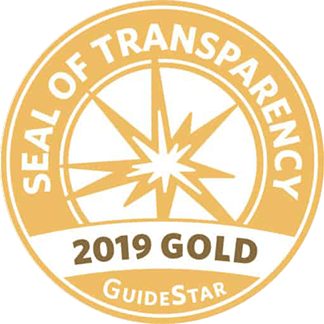Comprehensive paid family and medical leave is a foundational right that allows workers to care for themselves and their family members during some of life’s most trying times, such as when the worker or their family member is seriously ill. Strong paid family and medical leave programs are an especially critical measure for LGBTQ youths so that they can overcome barriers and achieve equal opportunities in the workplace, thriving and leading the way for others.
Paid Family and Medical Leave Can Keep Young LGBTQ Workers and Their Family Members Attached to the Workforce
- A 2020 national survey found that “[n]early half (48%) of LGBTQ youth ages 13–24 were employed either full-time (32%) or part-time (16%)” and “[a]mong those aged 18–24, 70% were employed.” Throughout the U.S., it is estimated that nearly 2 million youths ages 13-17 are lesbian, gay, bisexual, or transgender based on a 2020 survey, representing 9.5% of the youth population.
- It is clear that LGBTQ individuals are a core part of our workforce, lifting up our economy and their own family economic security. Also, how they begin their careers will have ripple effects throughout their lifetimes.
- Unfortunately, LGBT people in the U.S. are more likely to experience poverty than their straight, cisgender counterparts. In 2021, 17% of LGBT people and 12% of straight, cisgender people experienced poverty.
- Paid family and medical leave can support LGBTQ youths by keeping them attached to the workforce and providing critical benefits during periods of leave.
- Many LGBTQ workers—especially LGBTQ people of color—are forced to quit their jobs altogether when they experience a need for leave from work. Access to paid family and medical leave can allow workers the right to take the leave they need without putting their jobs at risk.
- By ensuring that low-income workers have access to benefits during periods of leave, paid family and medical leave programs help low-income families stay afloat while a family member has a need to take leave from work.
- Many LGBTQ workers—especially LGBTQ people of color—are forced to quit their jobs altogether when they experience a need for leave from work. Access to paid family and medical leave can allow workers the right to take the leave they need without putting their jobs at risk.
LGBTQ Youths Need Mental Health Supports
- Many LGBTQ youth are willing to bypass stigma and discuss their struggles with their mental health—serving as powerful role models for others, including older generations who may suffer in silence. Unfortunately, seventy-three percent of and 58% of LGBTQ youth have experienced symptoms of anxiety or depression, respectively. And an unfathomable 45% and 14% of LGBTQ youth have considered or attempted suicide, respectively.
- Despite the clear need for access, 60% of LGBTQ youth who want mental health care have not been able to access it. Comprehensive aid family and medical leave laws can help LGBTQ youth access life-saving health care.
- Studies have shown that children and family caregivers are more likely to have better health outcomes when the caregiver has access to paid family and medical leave.
- Many LGBTQ youth are willing to bypass stigma and discuss their struggles with their mental health—serving as powerful role models for others, including older generations who may suffer in silence. Unfortunately, seventy-three percent of and 58% of LGBTQ youth have experienced symptoms of anxiety or depression, respectively. And an unfathomable 45% and 14% of LGBTQ youth have considered or attempted suicide, respectively.
Inclusive Family Definitions Support LGBTQ Youths
- While many families in the U.S. do not fit the mythical nuclear family model, LGBTQ communities have long led the way by creating close bonds with chosen family.
- Many LGBTQ youths build connections with chosen families, or networks of loved ones who are not legally or biologically related to one another. An astounding 39% of LGBT adults have been rejected by their biological families because of their sexual orientation or gender identity, and an unconscionable 40% of homeless youth are LGBTQ.
- Paid family and medical leave programs that cover all of a worker’s closest loved ones, including those the worker is not legally or biologically related to, provide essential support for LGBTQ youths and their family members. When workers are able to care for and be cared for by all of their closest loved ones, families are stronger.
- In 7 of the 14 state paid family and medical leave programs, workers can take leave to care for all of their loved ones—whether biologically related or not—with whom the worker has a close association, personal bond, and/or caregiving relationship, though their exact family definitions have some differences.
- While many families in the U.S. do not fit the mythical nuclear family model, LGBTQ communities have long led the way by creating close bonds with chosen family.
Paid Family and Medical Leave Can Support LGBTQ Survivors of Domestic Violence
- Paid family and medical leave can serve as a crucial support for survivors of domestic violence and their families. When survivors of domestic violence and their family members have access to paid leave to navigate the aftermath of domestic violence (such as relocating or seeking medical attention), they can take the time off from work that they need without fear of losing their job or their paycheck.
- Six of the 14 state paid family and medical leave programs cover “safe leave,” or leave to address certain needs when the worker or their family member experiences domestic or sexual violence.
- Six of the 14 state paid family and medical leave programs cover “safe leave,” or leave to address certain needs when the worker or their family member experiences domestic or sexual violence.
- LGBTQ youth are much more likely to experience domestic violence or dating violence than their straight or cisgender counterparts.
- During the COVID-19 pandemic, LGBTQ youths were more likely to experience emotional or physical abuse by a parent or other adult in the home.
- Lesbian, gay, and bisexual (LGB) youth are also more likely to experience dating violence.
- During the COVID-19 pandemic, LGBTQ youths were more likely to experience emotional or physical abuse by a parent or other adult in the home.
- Paid family and medical leave can serve as a crucial support for survivors of domestic violence and their families. When survivors of domestic violence and their family members have access to paid leave to navigate the aftermath of domestic violence (such as relocating or seeking medical attention), they can take the time off from work that they need without fear of losing their job or their paycheck.
This fact sheet is part of a series on supporting young workers as they care for themselves and their loved ones. Additional resources:
- The Case for Paid Family and Medical Leave for Foster Placement
- Part-Time Workers Need Paid Leave
- The Importance of Paid Family and Medical Leave for Young Breastfeeding & Lactating Workers
- Parents Caring for Adult Children Need Access to Paid Leave
- The Need for Paid Family and Medical Leave As A Critical Support for Young Adults’ Maternal Health
- Closing the Wage Gap for Young Black Women
- The Importance of a National Paid Sick Leave Law for Young Workers of Color
- The Importance of a National Right to Paid Family and Medical Leave for Young Workers of Color







